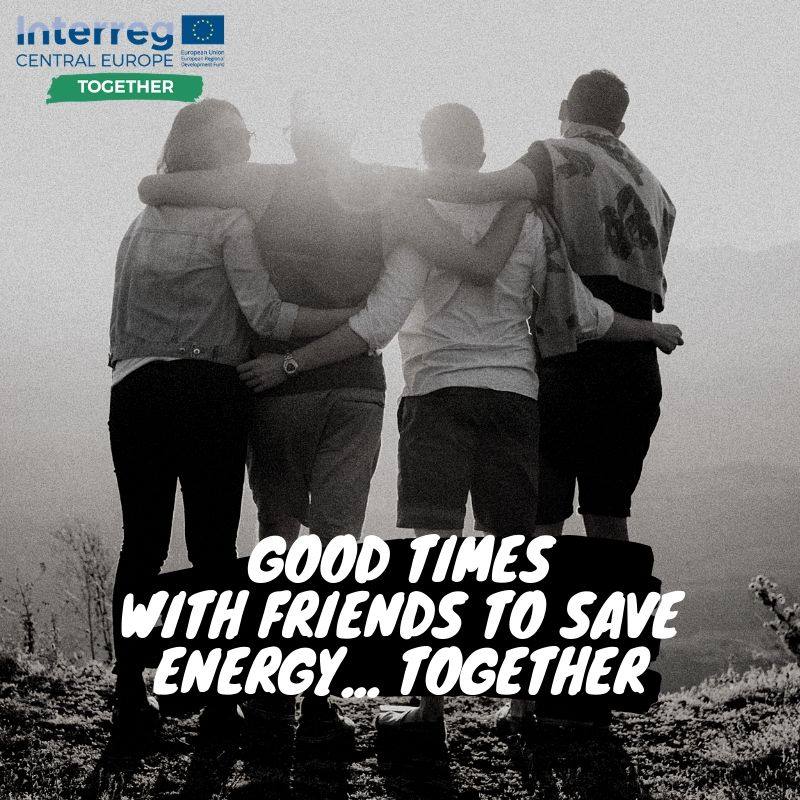The TOGETHER team says goodbye!
The dancer Mikhail Baryshnikov once said, “I do not try to dance better than anyone else. I only try to dance better than myself”. We could say that this statement also sums up the impact of TOGETHER: we are not trying to manage energy in public buildings better than anyone else. Thanks to the TOGETHER project, we were only trying to manage energy better than it is usually done, by introducing a concept of measurement that is partially unknown in similar contexts and encouraging Central European local authorities to adopt established managerial solutions to involve users in the energy management of public buildings.
The evidence being collected in the 84 pilot buildings is interesting not only in terms of figures of participation, but also in terms of energy performance, i.e. savings in public money spent on energy bills. This result is particularly relevant given the budgetary situation of most local authorities, which forces them to limit hard investments in the renovation of their buildings, while at the same time lacking the capacity to adopt soft measures for energy efficiency, as suggested by the Directive 2012/27/EU and its following amendment. TOGETHER has realized a sort of one-stop-shop for public administrations, focussing on relevant energy efficiency financial instruments and aiming at reaping “high-hanging fruits”, to be mobilized together with soft measures – which must not be forgotten- in order to reap “lower-hanging fruits”, necessary to secure energy savings and constantly expand the margins of improvement.
Without knowledge, it is not possible to decide and act!
Finally, the TOGETHER approach – based on a holistic vision of the building and its community, as well as on the integration of legal and financial aspects with technical and behavioural DSM aspects – has been conceived of as inherently replicable. This is also why it was the subject of a systematic, transnational policy mainstreaming programme to be continued after the project closure, trying to get to National and European stakeholders while showing the positive results of behavioural change in energy management of public buildings. This also brings important benefits to society, which we are not able to measure, for example in the case of pupils, especially from primary school, going home and acting the same way they have learnt at school, thus, ultimately, forming a new generation of young adults who have been trained to be environmentally aware.
This approach is proving to effectively engage all users and stakeholders of a public building in a joint endeavour for the common good and its financial impact can be multiplied if joined with the adoption of an innovative EPiC scheme, where a similar revenue sharing mechanism is established between the procurer and the supplier.
The Smart Toolkit delivered as project output (a combination of DSM and gamification tools, legal and financial instruments, and the monitoring software associated with the installation of smart meters) is totally free of charge and can be promptly reused by any interested building owner. Most of the soft measures foreseen by the TOGETHER approach are also accessible at virtually zero cost, such as the creation of a Negotiating Panel, the creation of a Building Alliance based on the 50-50 (or other percentage) sharing of the financial gains from the reduction in the building energy consumption. As for the installation of smart metering and automatic feedback systems, such as maxi screens for the buildings public areas, the costs of investment can be kept to a minimum and easily supported by third parties, such as ESCOs, in the framework of EPCs. It should also be mentioned that the Green Schools competition run by the Province of Treviso, now at its sixth edition, is funded by own resources and notably through the financial savings obtained in the context of the existing EPIC (Energy Performance Integrated Contract), which will soon be renewed at more favourable conditions for the procurer. The deployment of smart meters has a strong potential in energy reduction programmes based on the user engagement. However, in practical terms, it is not possible to transfer the technology “per se” but only the knowledge acquired about the specific type of technology. In some partners’ regions, the introduction of such new technology represents a “first time experience”, not only at city level but also at regional/national level, at least in the public building sector. At the same time, our project is neutral from a technological point of view. As a matter of fact, the behaviour-based energy efficiency programmes can be implemented even when smart meters are not available. It is clear that programmes based on the combination of social and technical components are much more reliable and technically correct, but an Administration could start from the lowest step: mapping, involving the building users and creating the necessary conditions to start a basic assessment of the consumption profile and the building life style. During the second half of the project, several municipalities involved as associated partners decided to invest additional resources to integrate the monitoring systems provided by the project or to facilitate the achievement of the targets of consumption reduction by implementing other structural measures. Likewise, the XII District of Budapest (a formal partner of TOGETHER) invested own resources, beside their project budget, to complete the information distribution system by a text messaging service.
It was a long journey.. together!if you want to know more about the project, don’t miss our final e-book that is available under the “relevant document” section together with other documents and material!
So… TOGETHER is over… but remember TURN OFF THE LIGHT ON YOUR WAY OUT! SAVE ENERGY

